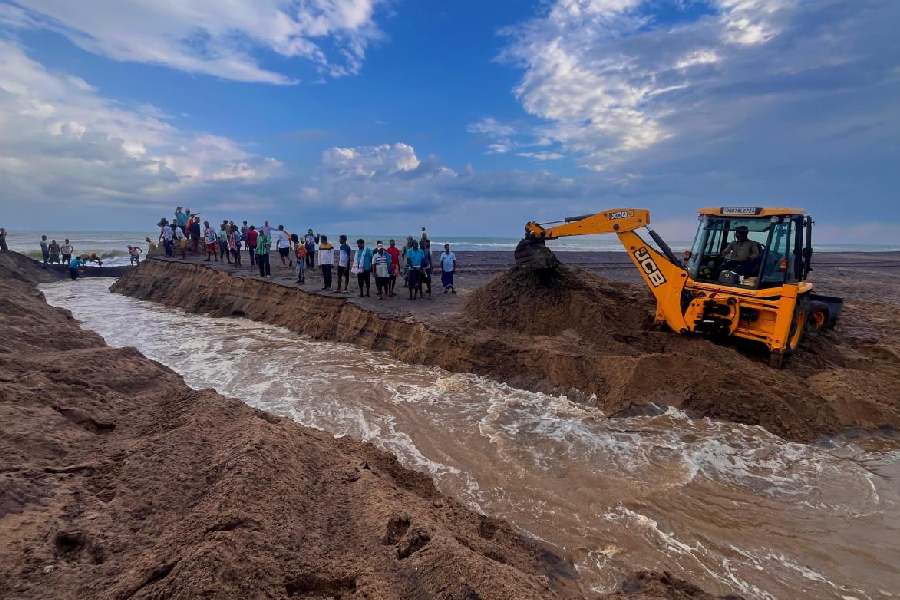Residents from three villages in Odisha’s Ganjam district dug a 200-metre river mouth on Thursday night to prevent thousands of acres of farmland from being flooded by rainwater triggered by Cyclone Montha.
Working for nearly 10 hours with shovels, spades and a JCB machine, over 500 residents from Bada Noila Nuagaon, Sana Noila Nuagaon and Purunabandha villages created the artificial outlet at Gangadevi front near Purunabandha. Their quick action ensured that accumulated rainwater drained into the Rushikulya river — the largest river in southern Odisha — and from there into the Bay of Bengal.
The villagers said they had to act before November 5, the day of the full moon, when tidal water would start pushing inland and worsen backflow into the fields. “From November 2, the tides begin to rise and river discharge stops. The sea starts sending water back into the land. We had to complete the digging before that,” said Ardu Kaleya, secretary of the Bada Nolianuagam Primary Marine Fishery Cooperative Society. “The work continued for nearly 10 hours and finished late Thursday night. Today, the water is quietly being discharged into the sea. We are relieved.”
The initiative was led by the Rushikulya Turtle Sea Protection Committee. Its secretary, Rabindranath Sahu, told The Telegraph: “Though the cyclone spared southern Odisha, the heavy rainfall threatened to destroy huge swathes of farmland. The villagers decided to dig a new mouth so that all the water from the agricultural land could flow into the Rushikulya and then into the sea.”
The Rushikulya, which originates from the Rushimala hills in Kandhamal district, is known to shift course frequently. The existing natural mouth, around three kilometres away, had become too clogged to drain water efficiently. “Cyclone Montha caused over 100mm of rain. The fields were drenched and the water needed to be discharged quickly. The new mouth is now helping the river release the excess,”
Sahu said.
Asked why they didn’t approach the government, Sahu explained: “That’s a cumbersome process. You need to submit a proposal, wait for scrutiny, and then approval. It takes months. We had to act on an SOS basis.”
Magata Behera, president of Purunabandha village, said the new mouth will also help thousands of fishermen dependent on the Bay of Bengal. “After catching fish, they return through the river mouth to unload their boats. The old mouth was four kilometres away. The new one is near our villages and much more convenient,” he said.
“With large volumes of fresh water now mixing with the sea, fish production is also expected to rise,” Behera added, watching the newly opened channel gushing steadily into the ocean.











